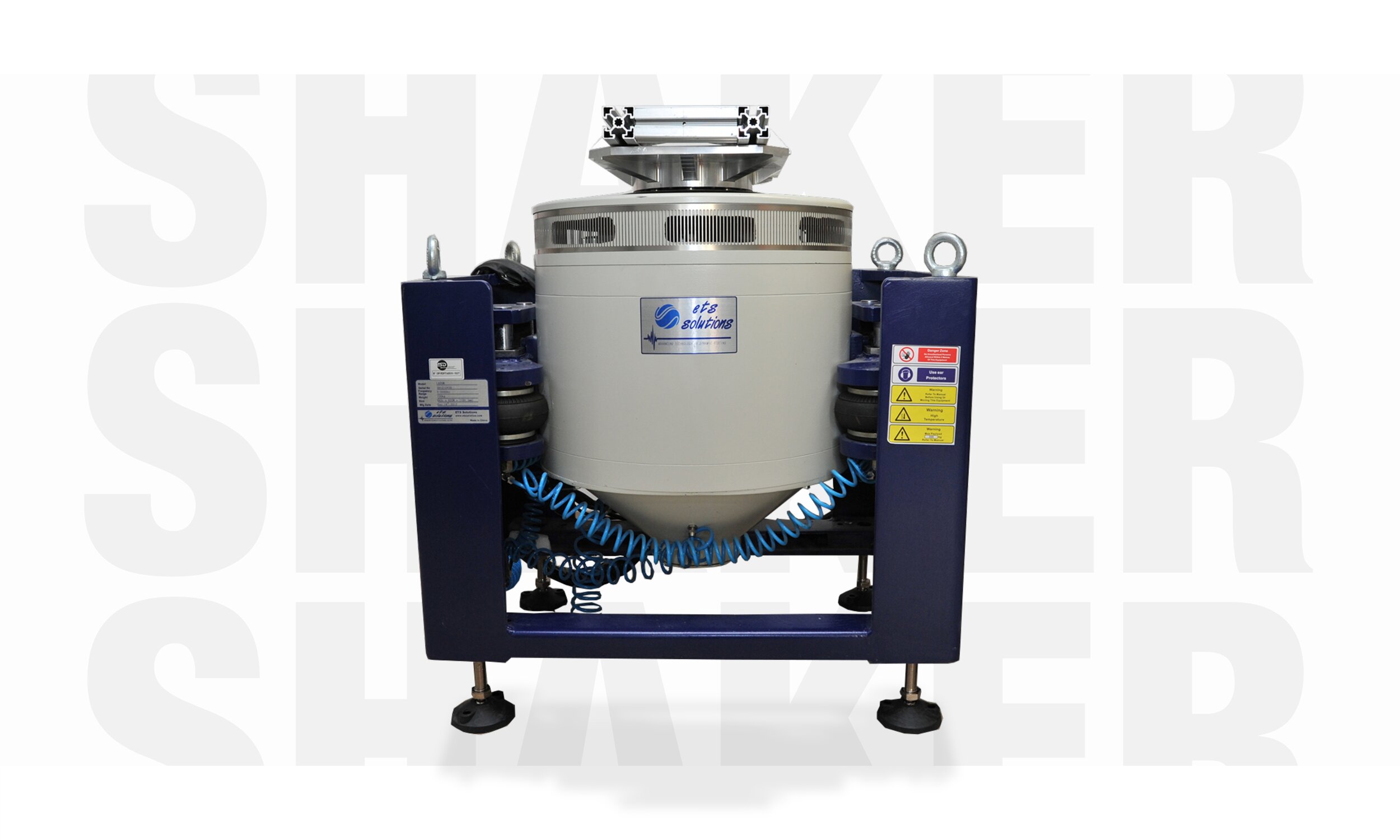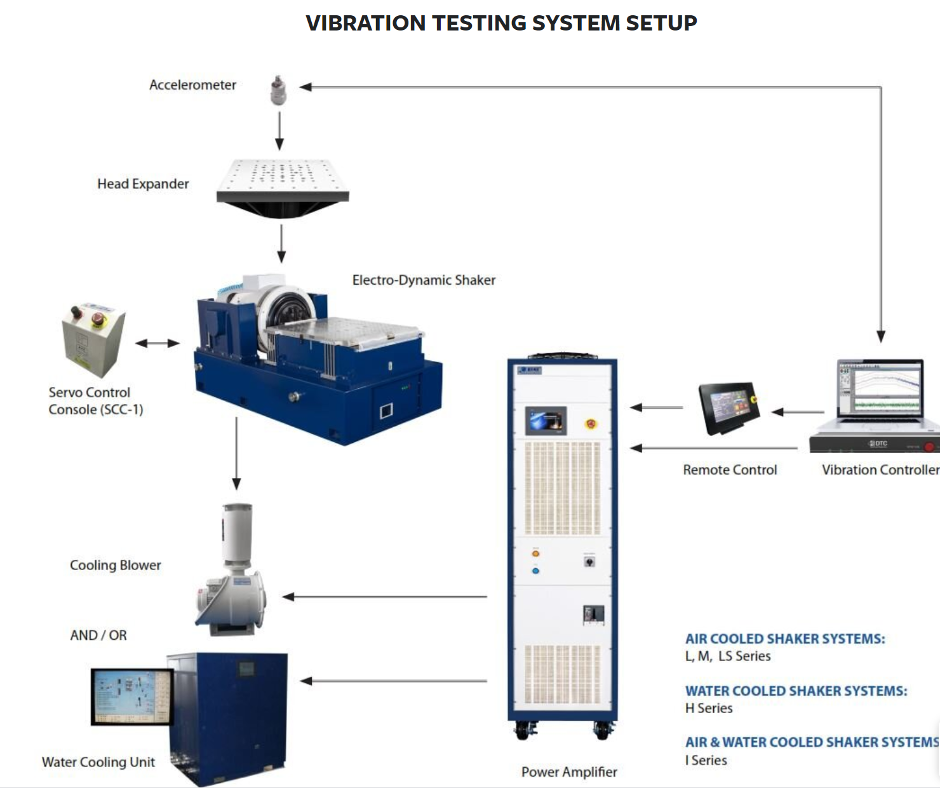Vibration tests are an important part of the development process of a product and the optimization of these products in order to satisfy the imposed vibration requirements.
Simulating the everyday life of any product or equipment is an integral part of its test and validation process. Shaker testing allows you to predict the failure modes of a product, equipment or component and monitor their dynamic behaviour to improve their reliability.
Vibration tests are commonly used to improve the reliability of various products, equipment or components such as military hardware, avionics instrumentation, consumer electronics, automotive components, telecommunications gear and others.
Electrodynamic vibration systems are capable of performing many different tests that specify sine, random, shock, sine-on-random, random-on-random and other complex waveforms as well as replicating data that is collected from real world conditions.
The image below represents the fundamental concepts and the basic elements that comprise an electrodynamic vibration system.
ETS Solutions Asia offers a wide range of vibration testing systems to simulate the operating and field environment dynamic conditions.
Selecting a shaker can be both challenging and perplexing: challenging because it is neither a straightforward nor mundane task, and perplexing because of the nagging thought “What if I make the wrong selection?”
In order to choose the right shaker, there are a few major specifications to consider such as frequency range and waveform, displacement and velocity, the number of axes to be tested, payloads and vibration/shock levels, and force rating.
Before testing can begin, select a vibration shaker suited to your testing needs by answering the questions below:
What is the total payload?
Item to be tested + any adaptors & fixtures = payload
Adaptors and fixtures are sometimes required to mount the test item as it is not possible to drill additional holes in the shaker armature. Components, cables, connectors, and bolts, that move with the shaker during testing must be included in the total weight.
What is the required acceleration for testing?
If you do not know the acceleration required for testing, convert your vibration specification data into acceleration units. Use g's peak for sine testing or g's rms for random testing.
Metric calculations: 1g = 9.8 m/s²
How to calculate the required force for your shaker
Is the displacement in range?
Check for the frequencies required on your test to verify that you will not exceed the shaker's stroke capability. Using the minimum frequency and acceleration levels, calculate the displacement using the following equations:
Metric calculations: 496.82 g/f² = d [millimeters pk-pk]
Running a successful vibration test is not easy. A good vibration test lab will make it look easy, but running a vibration test requires significant knowledge of vibration theory, fixture design, testing skills, and a skilled operator to run the vibration test equipment.
Things to consider before proceeding with your test:
Make sure you have the right fixture to secure your DUT on the shaker
If any special support equipment is required for the test, like special fixtures, if you do not have it yet, you need to consider it as significant time may be required to design and manufacture special fixtures.
Test setup
The test setup may also involve a trial run with the fixtures alone to scan for severe resonances. This is a good idea especially when testing to high frequencies of 2,000 to 3,000 Hz. Before starting the shaker, all support equipment and the DUT should be operated to verify that it is working acceptably.
Most vibration tests are performed along three orthogonal axes, but only one axis at a time. Time will be needed when changing from one axis to another especially when switching from a horizontal to vertical axis. Fixtures will need to be unbolted from the table and the lab may need to disconnect from the horizontal slip table, rotate the shaker vertically and then install a vertical head expander. So if your vibration test is 8 hours in total duration, plan for extra time to switch axes which could mean that your test takes more than 1 day. The time required to switch to a different axis could be less than 1 hour to 1 day depending upon the size of the product, the complexity of the test fixtures and the support equipment.
Does your lab require vibration shakers? Not quite sure what your test setup needs?
ETS can help! Our qualified sales team can work with you to select the right equipment at the right price. We’ll put together a custom package of hardware, software, and shakers for all your foreseeable testing needs. Contact us today!







